Analogue Addressable Fire Systems
This type of system uses a simplified cabling layout and is able to highlight the particular device that has activated the alarm (e.g. call point main entrance). This format enables considerably quicker identification of the cause of alarm and is often used in larger or more complex types of building.
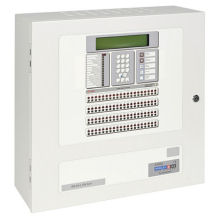
Morely Analogue Addressable Fire Panels
The Morley range of analogue addressable fire alarm panels have been designed and are constructed around proven and reliable microprocessor technology. This simple approach has produced a modular, scaleable fire alarm platform suitable for protecting all types of premises.
Designed for maximum flexibility the Morely range of panels are supported by a complete suite of peripherals and software tools. Information on the location of fires, faults and system status can easily be displayed or printed in multiple locations.
This adaptability, support and intelligence means that the Morley range is suitable for new projects, system expansions, retrofits and system upgrades in all application areas. Offices, industrial units, multi-storey buildings, entertainment venues, industrial plants and hospitals are a few of the many applications that can benefit from the features of the Morley range of intelligent multi-protocol fire alarm control panels.
Downloads
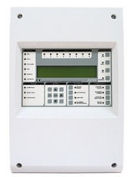
Juno-Junior Analogue Addressable Fire Panel
The Premier Fire Juno Junior V4 is a one or two loop Analogue addressable control panel that provides a cost effective solution for small to medium sized installations. The Premier Junior V4 can support up to 125 addressable devices per loop which is compatible with Apollo XP95 or Hochiki communications protocols. Using Premier Fires advanced communications mechanism up to 32 individually addressed Loop sounders or sounder beacons can be connected to each of the Junior's detection Loops. The Premier Junior also supports 32 Shadow type loop powered sounders or sounder beacons per loop.
Downloads
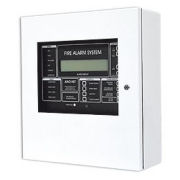
Juno-Net Analogue Addressable Fire Panel
The Premier Juno-Net is a powerful Analogue Addressable fire Alarm control system with networking capabilities that facilitate the configuration of complex wide area Fire detection systems. Modular construction and distributed intelligence allow systems of up to 96 Loops to be constructed. With a high level of built in redundancy and emergency back up features the Juno-Net is fully equipped to control the most complex installations.
Using its wide array of interfacing capabilities the Juno-Net is ideally placed to provide an efficient and effective solution to the logistics of protecting large institutions, Universities, Airports, industrial complexes etc which may have many individual Fire Alarm systems but require central reporting and control can easily be accommodated by the advanced capabilities of the Juno-Net.
Downloads
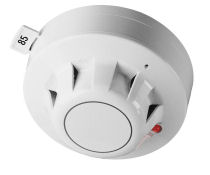
Addressable Detectors
The XP95 range of analogue addressable fire detectors is advanced in design, improved in performance and has unique features that benefit the installer and the end user. The range includes both ionisation and optical smoke detectors, temperature detectors as well as a multisensor. All have an unobtrusive profile, a zero insertion force base, user friendly addressing and extended data and alarm features. Associated compatible products - including interfaces, manual call points, isolators and loop sounders - are also available.
The detectors have been carefully researched and developed by the Apollo design team and the range has undergone rigorous testing to ensure that it meets not only European and other standards but also the demands of today's high technology environments.
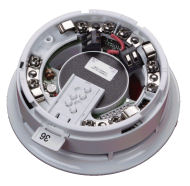
Addressable Sounders
The Integrated Base Sounder comprises a base sounder with integral mounting base and is for use with Discovery or XP95 ranges. It is designed for use in enclosed areas. Two tone ranges Synchronisation of ‘alert’ and ‘evacuate’ tones Individual and group addressing Unique acoustic self-test Integrated base Isolator option
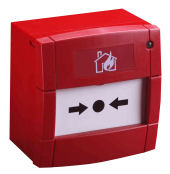
Addressable Callpoints
The XP95 Manual Call Point is compliant with EN54-11. The address of each call point is set at the commissioning stage by means of a seven segment DIL switch. The device features plug and play terminal connections and a resettable element.

